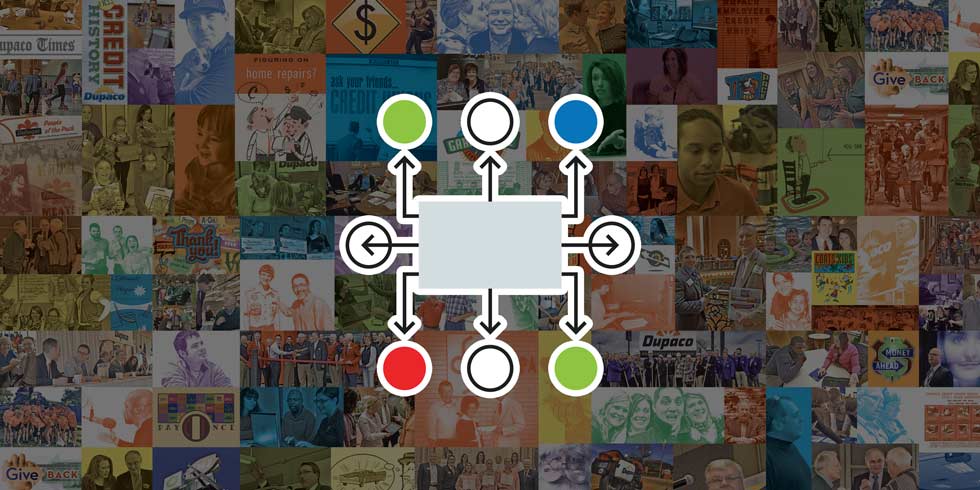
It’s always reassuring when one of your promotional ideas succeeds. The money you spent delivers new sales. And those customers become loyal repeat advocates.
The reverse can be frustrating. You invest your hard-earned dollars into advertising your business with no noticeable result.
You’re faced with so many choices to get your message out to your customers. There’s social media, direct selling, content marketing, webinars, print media, TV, radio, online advertising and more.
You can increase your chance of spending your money wisely by following these seven promotional planning steps.
|Step #1| Identify your exact target
If you can accurately segment and profile the type of customer you want to sell to, it’s easier to determine how to reach them.
Your target segmentation might look something like one of these:
- Female professionals, single, ages 20-30, earning more than $100,000 per year.
- Start-up software companies under two years of operation.
- Owner-operator trade with less than five employees working in residential renovations.
- Retired couples, avid gardeners, ages 70-plus, living in their own home.
It might help to review your customer records and accounting data to get an accurate profile of your ideal customer. Targets don’t need to be people—they might be a type of business.
|Step #2| Find out their behavior
Conduct as much research as you can to customize your message. For example, what does your target customer do? What does this customer say?
It’s increasingly possible to position your advertising (especially online) to appeal to the right individuals.
Here are some things you’ll want to find out about your target customer:
- Where they live (to know which regions to promote in)
- How they found you (so you know what advertising works)
- What they do online (to decide where to advertise)
- Which social media platforms they use (to help you participate)
- When they buy (to help schedule promotions)
You can collect this information through a simple verbal survey the next time you talk to a customer.
|Step #3| Set your objectives
List what you want to achieve with each promotion.
Objectives can be:
- Simple (10 new customers a week)
- Harder (10 new customers a week spending more than $2,000 each)
- Complex (10 new business customers a week to sign new contracts of service)
Keep your objectives short and measurable. This will help you evaluate whether your promotional plan is working. This way, you’re prepared to drop anything that doesn’t work.
|Step #4| Develop tactics
Outline what you’re going to do to get in front of each target you outlined in Step 1.
Let’s use the retired couple as an example. You could:
- Join the local bowling clubs and advertise in their newsletter.
- Trial targeted advertising on Facebook.
- Collaborate with complementary businesses targeting the same demographic.
- Participate in relevant online social media.
- Find a list of relevant events and sponsor them with a call to action.
Fit the tactics to your target.
Spending money on social media and getting to the top of search engines makes sense if your target is active online. But if that’s not where your target customer spends time, this channel doesn’t make sense.
Use the behavioral evidence and data of what most of what your target does and wants to increase the chance they’ll pay attention to your promotions.
There will always be outliers. Not all retired couples bowl, for example. But if there are enough customer types to constitute a viable market, it’s probably worth your efforts.
|Step #5| Develop a timeline
Your timeline should document your promotional ideas throughout the year. This is easier to do with the information you have about your target customers.
You can create a simple timeline on a spreadsheet or use the latest software and apps.
|Step #6| Create a budget
Determine how much it will cost for all of your promotional ideas. Assign a budget for each promotion, then add these costs to your 12-month cash flow.
For each tactic, calculate what level of sales you need to cover your costs by completing an advertising break-even.
For example: If you spend $10,000 on a promotional idea and your gross profit on each sale is $1,000, you need 10 sales to cover the advertising cost. Sell 11 and you’re in profit.
|Step #7| Evaluate your results
Measure which ideas in your promotional plan work by asking, surveying and tracking as many sales as possible. Then repeat what worked best and stop the tactics that didn’t.
Once you develop your promotional plan, regularly review each step each year. You might find new customers to target, new ways to reach them and new tactics to adopt as technologies, needs and wants change.

